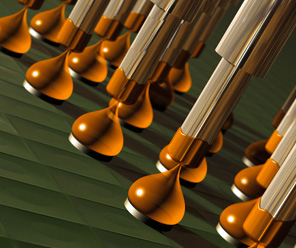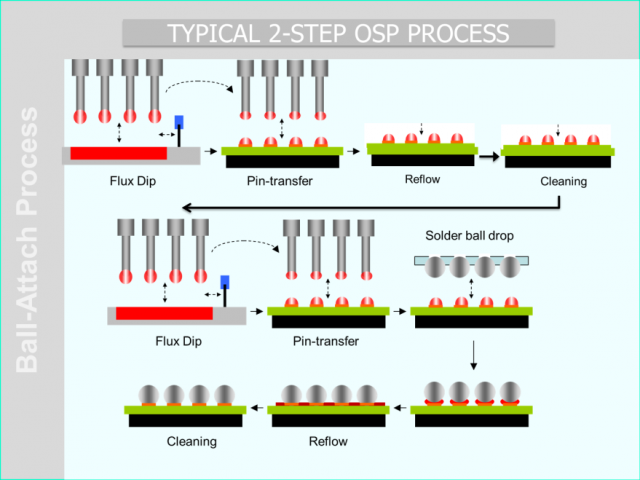The ball-attach process can be considered a trivial step when creating an FCBGA or similar package, but the final soldering step can be rather complex. There are several variables that impact the final ball-attachment from the number of assembly processes needed before. These processes can be a key factor in the final yield of the FCBGA. Recently, I have been researching materials interactions on a Cu/OSP surface that has gone through a simulated process. The typical process that occurs before the ball-attach process consists of the following:
- Many drying steps
- Reflow
- Washing
- Underfill dispense and cure
- Laser ablation
- Plasma
- Treatment
- Fluxing, reflow, clean and dry
- Ball-attach flux transfer
Because of these processes, an additional soldering step is required, creating a “two-step” soldering process. It is required for many reasons, such as:
- Different OSP’s are used by different PWB fabrication manufactures with different performance properties.
- OSP is sensitive to high temperature excursions, especially in air
- OSP is sensitive to exposure to chemical cleaning.
But, the problem with removing the 1st soldering step to create a “one-step” soldering process is that defects can occur, including: poor wetting on the preconditioned OSP surface which would give variability in both joint strength and bump coplanarity, and the “missing-ball”/”big-ball” effects.
So, for the “one-step” soldering process to work, there is now a need for a flux to overcome the inconsistency of the surface finishes as well as inorganic materials that can clearly have an effect on solderability for the opposite side (BGA side) of the substrate. For more information on “one-step” soldering please feel free to contact me, you can also view a related blog post from Dr. Andy Mackie here: Ball-Attach Flux WS-446-NRD for Poor Quality OSP-wetting
Thanks,



